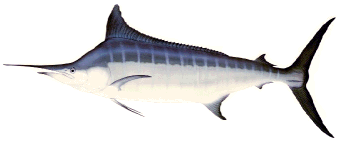 |
 |
 |
 |
 |
 |
 |
 |
 |
 |
 |
 |
 |
 |
 |
 |
 |
 |
|
|
Wetland Destruction |
|
|
|
 |
|
|
|
Where wetlands abound and the water is clean, fish life thrives.� However, since Colonial time an estimated 117 million acres (53%) of the lower 48 states' original wetlands (220 million acres) had been lost by the mid-1970s (Tiner 1984, Dahl 1990) or roughly 60 acres of wetlands were lost per hour between the 1780s and the 1980s.� Regional losses are depicted above.� The FWS estimates that 372,300 acres (or 18,600 per year) of "estuarine vegetated wetlands" were lost in the lower 48 states between the mid-1950s and mid-1970s (Frayer et al 1983), and 70,799 acres (or 7,900 per year) were lost between 1974 and 1983 (Tiner 1991).� Unfortunately, these estimates do not include the loss of riverine habitats, forested wetlands located upstream in drainage areas, or those low salinity wetlands adjacent to the saline marshes that together make up more than 85% of the inshore wetlands important to living marine resources.� ("Coastal" wetlands (NOAA 1991) make up about 25% of the lower 48 states' wetlands as measured by the FWS in its National Wetland Inventory, and include 4.3 million acres of salt marsh, 4.5 million acres of fresh marsh, and 17.4 million acres of forested wetlands.)� The FWS estimates do not include more than 385,000 acres of coastal wetlands in Louisiana and South Carolina recently "leveed off" for "marsh management" (with state and Corps of Engineers' approval) thus lost to normal use of such estuarine nursery areas by marine organisms.� Moreover, they do not include equally extensive seagrass losses particularly in Florida, North Carolina, and Maryland because this habitat type is not included in the FWS wetland inventory, although it may constitute as much as 40% of the U.S. coastal vegetated wetland area. |
|
|
|
Large areas of submerged aquatic vegetation have disappeared from Chesapeake Bay (due to floods, nutrient over-enrichment, and agricultural herbicides), Florida Bay (due to loss of freshwater sheet flow through the "Everglades"), and Tampa Bay (due to dredging and housing development).� Losses of coastal marsh have been most extensive in Florida, Texas, California, Louisiana, and the Northeast;� Florida has lost 9.3 million acres (Dahl and Johnson 1991).� The Chesapeake Bay has now lost 90% of its submerged aquatic vegetation and 50% of its coastal marsh (W.Goldsborough, personal communication: 1993).� By 1981, coastal development had eliminated an estimated 81% of Tampa Bay's extensive seagrass (Lewis et al. 1985) as well as 44% of its emergent marsh and mangrove habitats (Lewis and Lewis 1978).� Louisiana's coastal wetland losses between 1974 and 1983 are estimated to be more than 30 square miles (14,700 acres) per year (Britsch and Kemp 1990).� Galveston Bay lost an estimated 95% of its former seagrass meadows and 16% of its emergent marsh between 1959 and 1979 (Sheridan et al. 1989).� More than 91% of California's coastal wetlands have been lost (J.Zedler, personal communication: 1990).� San Francisco Bay wetlands have declined by 85% (Dedrick 1989). |
|
|
|
Extensive regional losses of coastal habitats, resulting from thousands of Federal projects and Federally permitted activities (e.g., dredge and fill), have been documented for the U.S. Southeast coasts (Lindall and Thayer 1982, Mager 1990).� Since an estimated 90% of the South Atlantic's and 95% of the Gulf of Mexico's commercial fishery resources are inshore-dependent, massive losses of coastal habitats, in addition to extensive commercial harvests, should be having an effect on fishery populations.� We now know that commercial fishery landings of the South Atlantic and Gulf of Mexico coasts have declined 25% and 26%, respectively, since 1978.� The inshore-dependent portions of these landings declined 29% and 30%, respectively.� Overall, annual landed value declined by $240 million (in constant 1987 dollars) or 32% for the Gulf of Mexico and $8 million or 6% for the South Atlantic coast during this period. |
|
|
|
Paradoxically, northwestern Gulf of Mexico landings of brown shrimp, white shrimp, and menhaden have not yet declined dramatically;� however, a population crash due to continuing habitat degradation may be looming.� Both the Louisiana and Texas coasts are subsiding (exacerbated by levees preventing Mississippi River flooding and by oil and gas extraction), wetlands are being filled and channelized, relative sea level may be rising, and thus saline and brackish marsh appears to be "migrating" inland at the expense of fresh marsh.� The increased duration of flooding of saline marsh (until it eventually dies), together with the increase in "edge" due to channel building, may actually be stimulating a temporary increase in the number of young shrimp and menhaden produced (Zimmerman et al. 1991).� However, continued human-induced fragmentation and destruction of coastal marsh nursery areas will inevitably affect the Gulf's shrimp and menhaden populations, as well as the other inshore-dependent species.� As an example, landings of Gulf of Mexico pink shrimp, which are dependent on seagrass nursery areas surrounding south Florida, are now at an all time low.� This is at least partially the result of the loss of freshwater inflow through the "Everglades" that had maintained the health of the formerly extensive seagrass communities throughout Florida Bay, extending to the Florida Keys. |
|
|
|
GO TO
Habitat
Habitat Protection Division
Importance of Shallow Water Habitats to Fish
Primary Causes of Fishery Population Declines
Dams and Flow Diversions
Toxic Contaminants
Nutrient Over-Enrichment
Cumulative Effects
Economic Benefits of Effective Habitat Protection
References
Swordfish, Billfish, Tunas and Sharks
Headed for Extinction
Articles and Photos of Big Game Fish
Chambers and Associates - Overview
Description of the Firm
Pages on this Website
Home |
|
|
 |
|
|
|
Chambers and Associates
9814 Kensington Parkway
Kensington, Maryland 20895
(T) (301) 949-3003� (Fax) (301) 949-3003
Email� [email protected]
Website�� www.Chambers-Associates.org |
|
|
|
|

